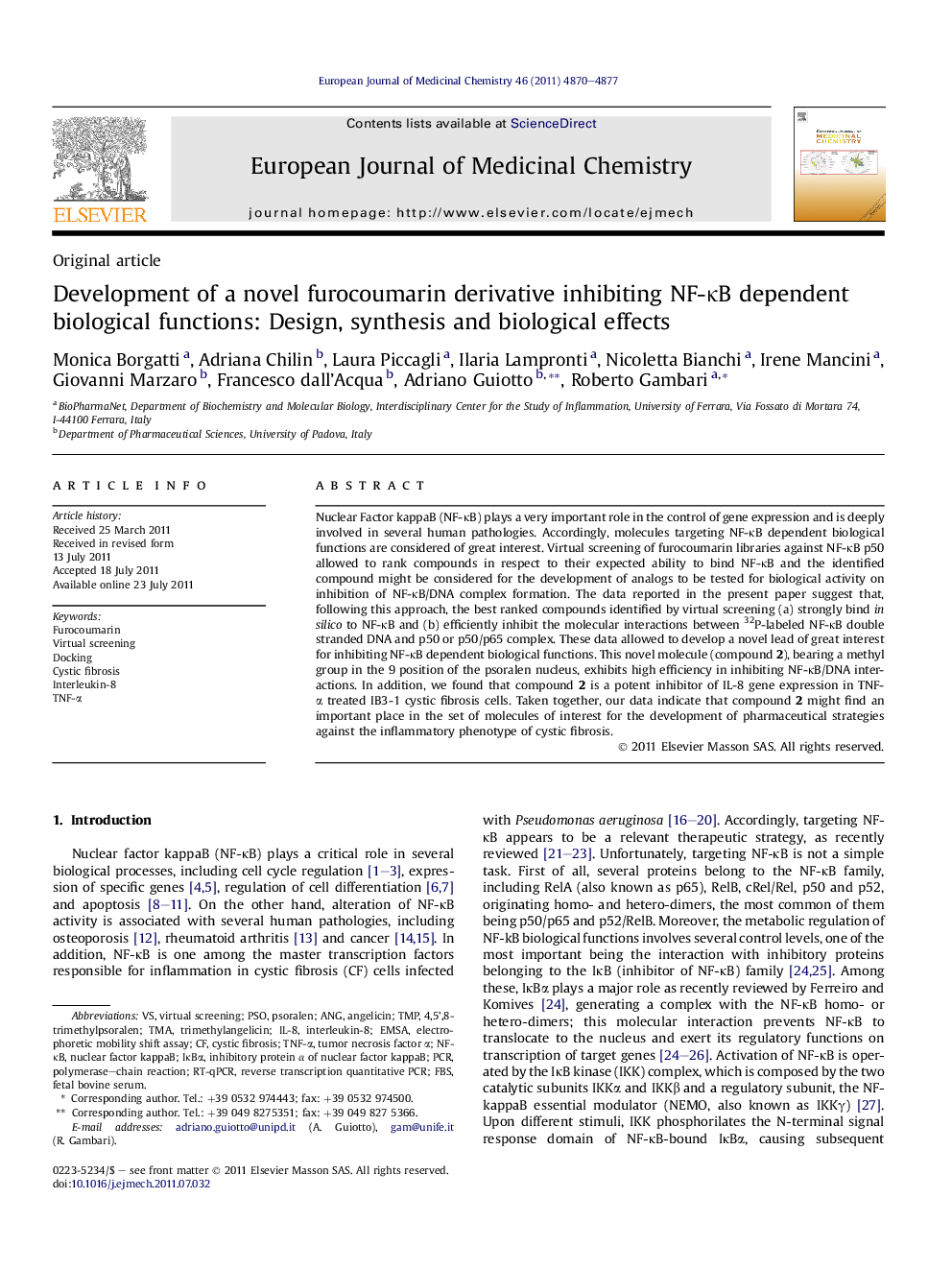| Article ID | Journal | Published Year | Pages | File Type |
|---|---|---|---|---|
| 1394549 | European Journal of Medicinal Chemistry | 2011 | 8 Pages |
Nuclear Factor kappaB (NF-κB) plays a very important role in the control of gene expression and is deeply involved in several human pathologies. Accordingly, molecules targeting NF-κB dependent biological functions are considered of great interest. Virtual screening of furocoumarin libraries against NF-κB p50 allowed to rank compounds in respect to their expected ability to bind NF-κB and the identified compound might be considered for the development of analogs to be tested for biological activity on inhibition of NF-κB/DNA complex formation. The data reported in the present paper suggest that, following this approach, the best ranked compounds identified by virtual screening (a) strongly bind in silico to NF-κB and (b) efficiently inhibit the molecular interactions between 32P-labeled NF-κB double stranded DNA and p50 or p50/p65 complex. These data allowed to develop a novel lead of great interest for inhibiting NF-κB dependent biological functions. This novel molecule (compound 2), bearing a methyl group in the 9 position of the psoralen nucleus, exhibits high efficiency in inhibiting NF-κB/DNA interactions. In addition, we found that compound 2 is a potent inhibitor of IL-8 gene expression in TNF-α treated IB3-1 cystic fibrosis cells. Taken together, our data indicate that compound 2 might find an important place in the set of molecules of interest for the development of pharmaceutical strategies against the inflammatory phenotype of cystic fibrosis.
Graphical abstractCompound 2, analog to furocoumarins identified by VS against NF-κB, binds in silico to NF-κB, inhibits DNA/NF-κB interactions and TNF- induced IL-8 gene expression in IB3-1 cystic fibrosis cells.Figure optionsDownload full-size imageDownload as PowerPoint slideHighlights► Compound 2 is a novel furocoumarin identified by VS approach against NF-κB. ► A methyl group in the 9 position of the psoralen nucleus confers biological activity. ► Compound 2 strongly binds in silico to NF-κB and inhibits DNA/NF-kB interactions. ► Compound 2 inhibits IL-8 gene expression in TNF-α treated IB3-1 cystic fibrosis cells. ► Compound 2 might be of interest for experimental therapy of CF.
